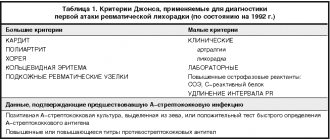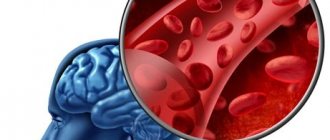According to WHO statistics, cardiovascular diseases are among the top three causes of death. Blood clots in blood vessels are one of the main factors in the development of ischemia of the heart muscle, as well as heart attacks and strokes. That is, increased blood clotting provokes acute diseases that lead to severe, often irreversible complications and death of the patient.
Causes of bleeding disorders
- Genetic. Sometimes the blood clotting mechanism has congenital defects caused by mutations in genes. Some mutations are inherited and lead to diseases such as hemophilia.
- Medicinal. Taking drugs that affect blood clotting (aspirin and other non-steroidal anti-inflammatory drugs, anticoagulants, fibrinolytics).
- Somatic. They occur against the background of other diseases (blood diseases, liver diseases, vitamin K deficiency, massive blood loss, etc.).
Most causes of bleeding disorders require immediate treatment. To detect them, you must first do a general blood test for blood clotting. Coagulation disorders can manifest themselves in two ways: increased and decreased blood clotting. The danger of increased blood clotting is explained by the high risk of blood clots in the vessels and the deterioration or complete cessation of blood supply to a tissue or organ. Reduced blood clotting, which can be congenital or acquired, poses a particular danger during injuries and operations.
CLINIC FOR IMPAIRED COAGULATION
Bleeding disorders in medical practice are combined into the groups of thrombocytopenia and thrombophilia. They are usually associated either with coagulation factors (vessels, the production and process of platelet destruction, deficiency of substances that are involved in the production of blood platelets).
Coagulation disorders clearly appear (their symptoms may indicate diseases):
- long-term healing of wounds after injury;
- bleeding from the gums during routine brushing of teeth;
- frequently appearing hematomas, bruises, bruises at the slightest mechanical reaction;
- prolonged menstrual bleeding cycles indicate clotting problems;
- formation of petechiae (spots caused by subcutaneous effusions of blood, they can be pink/purple/violet).
People with bleeding disorders experience muscle pain after the slightest exertion. Laboratory examinations reveal an enlarged spleen and an increased volume of megakaryocytes in the bone marrow.
Consequences of increased blood clotting
Under these conditions, the risk of blood clots is significantly increased. Inflammation of thrombosed veins leads to thrombophlebitis, accompanied by:
- pain;
- swelling;
- redness of the skin over the vein.
Blood clots in blood vessels lead to narrowing of their lumen and damage to tissue areas due to a lack of blood supply. When blood flow through a vessel is completely stopped due to a blood clot, an area deprived of blood supply appears in the tissue, which is called an ischemic focus. In this area, cells quickly die and the normal functioning of the organ is disrupted. Irreversible damage to the brain and heart are the most dangerous consequences of thrombosis. Another insidious complication is the detachment of a blood clot. Often the diameter of the blood clot is smaller than the diameter of the vessel, so the patient is unaware of its presence for a long time. However, with injuries and concussions of the body, at the beginning of taking medications that thin the blood, as well as when getting up on your feet after a long stay in bed (for example, after surgery), the clot can break off and continue to move through the bloodstream until it clogs the lumen of the vessel somewhere. It is because of such blood clots that a formidable and very dangerous complication develops - pulmonary embolism, which can result in the death of a person if medical assistance is not provided in time. They can only be detected by carrying out certain studies, including a general blood test for blood clotting.
Blood clotting problems in children: when and how to treat?
— How common are hereditary diseases of the blood coagulation system?
— Among them, the most common is von Willebrand disease, a blood disease in which spontaneous bleeding occurs. It is detected in 1% of the population, but the symptomatic form affects 125 people per 1 million population.
Hemophilia A is also common, diagnosed in 1 in 5,000 newborn boys, and hemophilia B in 1 in 20,000 newborn boys.
Effective treatment has been developed for these diseases, but there is no way to eradicate the disease itself today.
— What are the symptoms and causes of hemophilia?
- Mild hemophilia may not manifest itself in any way and may be discovered after significant trauma or surgery. Signs of moderate hemophilia develop after a year. The occurrence of hematomas and prolonged bleeding after relatively minor injuries is typical. The severe form manifests itself already in the first year of life, as the child becomes more active. It manifests itself as soft tissue hematomas, bleeding from the mucous membranes, and hemorrhages in large joints.
Hemophilia is caused by a breakdown of the gene containing information on how to produce clotting factor VIII (in hemophilia A), IX (in hemophilia B). These factors are necessary to form a blood clot that will close the hole formed in the damaged vessel. If there are not enough of them, the rate of blood clot formation decreases sharply and bleeding continues longer than usual.
— How is hemophilia treated?
— The most accessible and widespread method is replacement therapy with clotting factor concentrates. They can be plasma, made from donor plasma, or recombinant, which are obtained using genetic engineering methods. Factor concentrates are administered intravenously by health care workers or by patients and their relatives themselves.
Treatment of hemophilia can be carried out on demand, that is, upon the occurrence of bleeding, or prophylactically, when the factor is administered regularly to prevent irreversible joint damage and disability, depending on the severity of the disease. Life does not stand still; clinical trials are being carried out on drugs that allow one to avoid intravenous injections and the need for frequent repeated administrations.
- For example?
— Analogs of coagulation factors that can circulate in the bloodstream for a long time, imitating the function of the missing factor, gene therapy.
— Is it true that only males suffer from hemophilia, and is it transmitted through the female line?
— Due to the nature of the inheritance of hemophilia, in the vast majority of cases this is true. However, in a marriage between a carrier woman and a hemophiliac man, there is a 25% chance of having a daughter with hemophilia. In addition, if a carrier girl has a missing or inactivated X chromosome with an intact gene, she will also suffer from hemophilia.
Consequences of decreased blood clotting
With this condition, a person has an increased risk of bleeding. One of the common consequences is gastrointestinal bleeding against the background of an existing ulcer. Blood loss in such conditions due to the duration of bleeding can be very serious. Low blood clotting increases the risk of internal bleeding, which is often noticed too late. Therefore, it is necessary to conduct a general blood test for blood clotting before any operation, as well as during treatment with drugs that have a blood thinning effect (anticoagulants, antiplatelet agents, fibrinolytics, etc.).
Diagnostics
The main way to determine the degree of blood viscosity is to conduct a laboratory analysis of its sample. Increased density will be indicated by an increase in the number of blood cells - red blood cells. Another sign is a change in the level of hematocrit - an indicator of the level of leukocytes, platelets and red blood cells in the blood.
Also, if necessary, the child may be prescribed additional examinations if his condition requires it. JSC “Medicine” (clinic of Academician Roitberg) uses the most modern diagnostic methods:
- magnetic resonance (MRI) and computed tomography (CT) imaging;
- blood chemistry;
- general urine analysis;
- echocardiography;
- daily ECG monitoring.
Who needs to determine blood clotting?
To reduce the risk of developing vascular accidents and unexpected bleeding, it is necessary to periodically monitor the state of the blood coagulation system using a laboratory method. This is especially important for:
- people over 40 years old;
- women during and after menopause;
- women during pregnancy;
- people who regularly take blood thinners (aspirin);
- patients suffering from varicose veins;
- those preparing for surgery, etc.
The doctor must prescribe blood clotting tests if hemophilia is suspected (usually this disease is detected in early childhood and young adulthood) or when treating an existing thrombosis with fibrinolytic therapy and anticoagulants.
Treatment
Based on the results of the studies, the doctor will prescribe appropriate treatment. First of all, parents will be advised to change the baby’s diet if he has already switched to adult food. The child’s diet should contain the following products:
- beet;
- sour berries;
- sunflower seeds;
- olive oil;
- citrus;
- cocoa;
- ginger.
These products help thin the blood. It is equally important to exclude from the menu what, on the contrary, further increases the thickness of the blood. This applies to bananas, smoked products, soda, buckwheat, rose hips and walnuts. The drinking regime must be observed. The child should be given more clean water, green or herbal tea, fruit and vegetable juices.
Drug treatment
The second direction of treatment is taking medications prescribed by a doctor. Typically, these are medications that help thin the blood. The choice of drugs is made taking into account the age of the child, as well as the reason that caused the blood thickening. There is no universal treatment regimen, since the pathological condition can be caused by various reasons. Such drugs break down large protein molecules, thereby preventing blood thickening.
The main treatment is etiological, i.e. aimed at eliminating the disease or condition that provoked the increase in blood viscosity. If the cause is not addressed, then even after a course of thinning medications, the blood will again become thick.
How to test your blood clotting
Blood coagulation is a complex process consisting of several different parts and stages. Therefore, a blood clotting test should help evaluate the performance of each component link. Blood clotting occurs through the interaction of many factors along a chain. The results of a general blood test for blood clotting help determine which of the factors is impaired, which facilitates further diagnosis and choice of treatment. For example, an analysis to evaluate APTT (Activated partial thromboplastin time) helps to identify a violation of the “intrinsic” coagulation pathway and determine the tendency to bleeding. And prothrombin time allows you to evaluate the “external” pathway of blood coagulation, detect liver dysfunction and vitamin K deficiency. Another important indicator that greatly helps doctors when planning operations and assessing the risk of thrombosis (including during pregnancy) is a blood test to D-dimer. It allows you to:
- determine the risk level of acute and severe cardiovascular conditions;
- predict the further course of thrombosis;
- monitor the results of treatment over time.
Conducting a general blood clotting test is an important study that helps to significantly reduce the risk of unexpected complications and mortality after illness, surgery, or childbirth. The analysis data gives the doctor the opportunity to expect objective results from the upcoming treatment and control it, and the patient a chance to protect himself from the undesirable consequences of blood clotting disorders.
Symptoms of thick blood in a child
Abnormalities in blood composition can only be accurately identified through laboratory analysis. But some external signs and symptoms allow one to suspect it. Thus, thick blood in a child causes the following manifestations:
- cyanosis of the skin;
- drowsiness and lethargy;
- headache;
- swelling of the limbs;
- severe heaviness in the arms and legs;
- cold extremities;
- dyspnea.
In older children, you may notice a deterioration in concentration, a state of general weakness and apathy. Such sudden changes without any reason should alert parents. Symptoms of thick blood in children in rare cases include watery and burning eyes, complaints of bloating and constipation.
Hemostasis is the process that stops bleeding
Why does blood clot? Few people think about this crucial mechanism. It’s only after cutting yourself that the thought sometimes slips into your mind: “Why doesn’t the bleeding stop for so long?” The basics of this process are quite a complex topic. But you still need to know the minimum.
In many developed countries, starting from school, classes are held that teach children how to act in emergency situations. Such situations include sudden cardiac arrest, drowning, and trauma, which are often accompanied by external bleeding. For an unprepared person, the sight of human blood can prevent him from taking the right actions. Moreover, it can put a person into panic and stupor. In this case, wasting time is an unaffordable luxury. In the case of bleeding from large arteries, the outcome can be determined in seconds.
What happens in the body when there is bleeding?
The physiology of hemostasis, the process aimed at protecting life during bleeding, is complex. One can only marvel at how thoughtfully nature created man. Hemostasis mechanisms are activated instantly as soon as a blood vessel is damaged. When the inner layer of the vessel or endothelium is damaged, substances are released that signal bleeding. These are serotonin and thromboxane. Pain and these substances cause spasm of the smooth muscles of the damaged vessel, which leads to a decrease in blood flow and blood loss. Thromboplastin, a substance also released during injury, causes activation of platelets and a cascade of reactions leading to the formation of a blood clot. Thrombus is a blood clot that acts as a “plug”. It prevents bleeding.
How does a blood clot form?
Primary, or vascular-platelet, hemostasis is caused by vascular spasm and platelet aggregation. Platelets are small blood cells that have the ability to form a lump when activated. They stick to the edges of the damaged area and to each other. In this case, platelets are a source of biologically active substances that trigger the cascade of the coagulation system or coagulation hemostasis. Under the influence of these substances, as a result of a complex reaction at the site of injury, long threads of protein - fibrin - are formed in the blood. Fibrin strengthens the platelet clot and helps to reliably stop bleeding. Fibrin is constantly present in blood plasma in the form of inactive fibrinogen. Special proteins that regulate the process of fibrin formation, or coagulation factors, are also found in the blood plasma. This is why coagulation hemostasis is also known as plasma hemostasis.
A detailed diagram of hemostasis in the specialized literature takes up more than one page. It is important to conclude: to quickly stop bleeding, it is necessary to create conditions that facilitate the work of the hemostatic system. For example:
- if the wound is on a limb, use a tourniquet, this will slow down or stop blood circulation and bleeding;
- the wound must be squeezed or clamped tightly to reduce the lumen of the vessel;
- if possible, put cold on the wound (snow, ice, cold water in a bottle) to cause vasospasm;
- if a limb is injured, raise it high to slow down the blood flow;
- When applying a pressure bandage or covering the wound with a bandage or other dressing material, the bandage must not be removed or changed, even if bleeding continues. This can destroy an already formed but still weak blood clot, and the bleeding may increase. You should increase the pressure on the wound and use more bandages to get the person to the hospital faster.
Pathologies of the hemostatic system
Impaired hemostasis is a serious pathology. There are diseases in which the formation of a blood clot is impaired and (or) there is a risk of uncontrolled bleeding. Diseases of the hemostatic system:
1. Plasma hemostasis:
- violations of the synthesis of coagulation factors VIII and IX (hemophilia);
- von Willebrand disease;
- disseminated intravascular coagulation syndrome;
2. Platelet hemostasis:
- thrombocytopenia (decreased platelet count);
- Werlhof's disease;
- von Willebrand disease (platelet form);
- thrombasthenia and other diseases.
If a patient with these diseases bleeds, hemostasis will not be initiated properly. The extent of the damage is of great importance. Contrary to popular and erroneous belief, minor cuts and scratches usually do not pose a danger, but any pathology of hemostasis can lead to serious complications during surgical interventions and injuries.
Vascular-platelet hemostasis in people with hemophilia is the only mechanism that can stop bleeding.
Assessment of the state of the hemostasis system
The study of hemostasis is a mandatory item when preparing for surgery, during pregnancy and childbirth. Various analyzes and tests are carried out. Hemostasis and its condition can be assessed using a special analysis - a coagulogram or hemostasiogram. To carry out the analysis, blood must be taken from a vein. The study is carried out in vitro. Hemostasis can be examined by doing the following tests:
- blood clotting time or UCT;
- thromboelastography;
- prothrombin time;
- prothrombin test;
- activated partial thromboplastin time;
- level of fibrin degradation products (d-dimer, RFMK);
- thrombodynamic test, etc.
Based on the test results, it is possible to assess the state of the entire hemostatic system as a whole, or separately plasma and platelet hemostasis. An analysis for complete hemostasis is carried out in case of suspected coagulopathy (for example, hemophilia), to diagnose pathologies of the hemostatic system, in many diseases accompanied by disorders of the hemostatic system (oncological diseases, coronary heart disease, emergency conditions). The hemostasis laboratory is a special department in hospitals that performs these complex tests.
Molecular medicine methods have recently begun to be used to diagnose hereditary pathologies. Modern science allows us to look into a person’s genes and find out what features of the hemostatic system he has, what mutations have occurred, whether there is a disease or a risk of developing coagulation system disorders. The analysis is called polymorphism of hemostasis genes.
The Hemostasis Pathology Center is a leading medical institution that performs all types of necessary tests and provides medical care to patients with hemostasis pathologies. In the regions, this function is performed by the hemostasis center. Chelyabinsk, for example, on the basis of city clinical hospital No. 11, created such a center that serves the entire Southern Urals.
Hereditary diseases of the hemostatic system are a serious problem. Hemophilia is diagnosed in thousands of newborns around the world every year. Treatment of these pathologies is expensive and requires huge expenses. Most patients do not receive proper care.
Hemostasis disorders that occur in other diseases are of great importance in treatment. For example, with atherosclerosis, myocardial infarction, stroke, cancer, varicose veins of the lower extremities.
coagulogram, hemostasis
How to make an appointment with a pediatric cardiologist in Moscow
JSC "Medicine" (clinic of academician Roitberg) is located in the center of Moscow, near the Belorusskaya, Chekhovskaya, Mayakovskaya, Novoslobodskaya and Tverskaya metro stations. There are several specialists on staff, so you can make an appointment even on a weekend or holiday. To do this, fill out the online registration form on the website - everything is simple here, just follow the system prompts. You can immediately choose a specialist and any convenient time.
Another option for making an appointment is to contact us at contact number +7. We will help you choose a specialist and a convenient time for consultation. Do not put off visiting a doctor until later, as the child’s future health depends on it.










